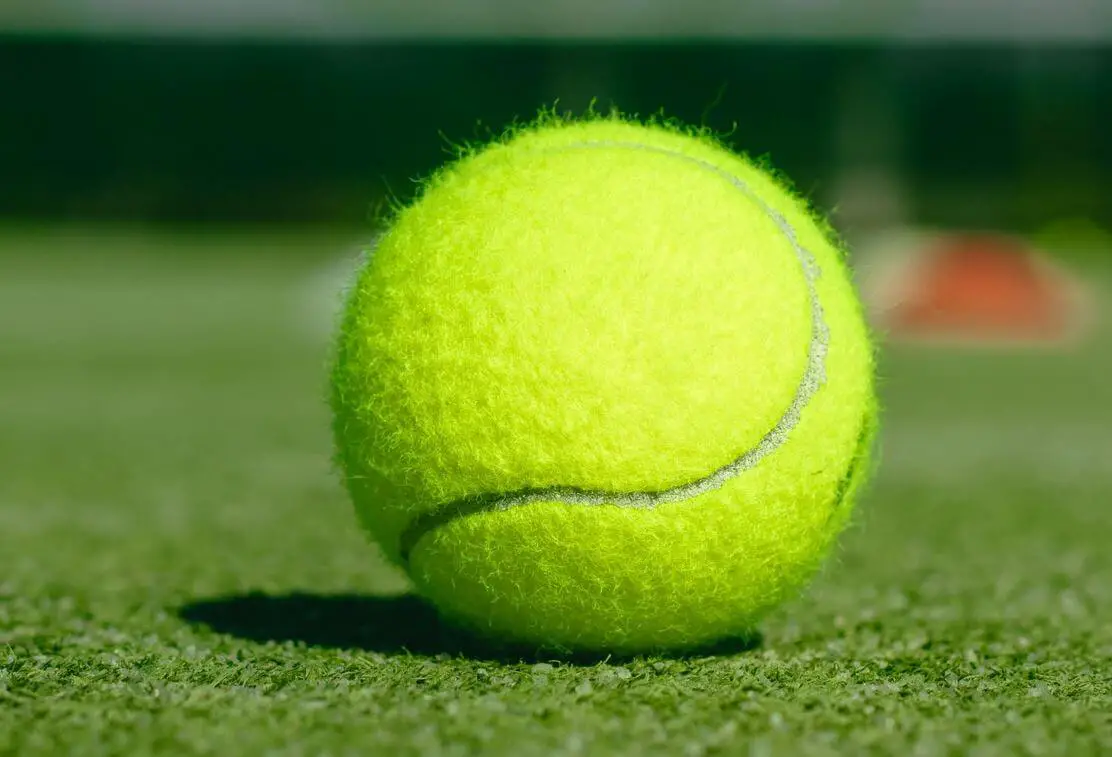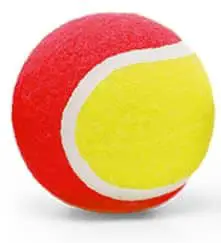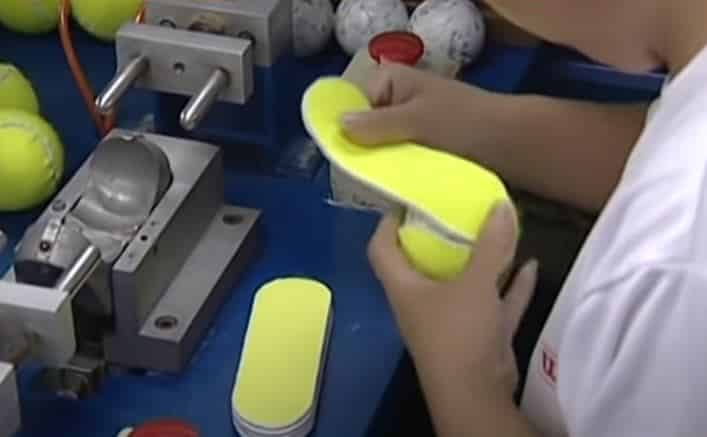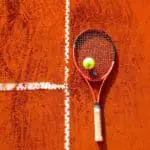
Tennis Balls – 13 Surprising Facts You Should Know
A tennis ball is always fascinating. Many people and also pets love to play or watch tennis balls fly from one area to another.
If you play tennis, the first thing that comes to mind is bringing tennis balls to the court. However, there are always questions we ask ourselves sometimes about tennis balls and I would like to answer a few common ones in this article.
Have a good read!
Are Tennis Balls Green or Yellow?
There is a fine line between green and yellow. The confusion is big when it comes to tennis balls.
Recently, a now-deleted Twitter poll by @cgpgrey asked more than 30 000 people whether tennis balls are yellow or green. The results were surprising:
- 52% said the balls are green
- 42% said the balls are yellow
- 6% said “other color”
Since 1972, the ITF required that official tennis balls should have a uniform surface and have to be white or yellow. This rule makes it clear that tennis balls are indeed yellow and not green.
Why Are Tennis Balls Yellow?
According to the International Tennis Federation, the researchers demonstrated back in 1972 that yellow balls are more visible to TV viewers than any other color. It was the main reason why most tournaments switched to yellow balls instead of black or white balls.
What Is the Last Time White Tennis Balls Were Used?

After the 1972 rule change by the ITF, the prestigious tournament of Wimbledon continued the tradition of white tennis balls. It wasn’t until 1986 that Wimbledon finally adopted yellow balls.
Therefore, the last time tennis was played using white balls was Wimbledon 1985.
What Is the Legal Tennis Ball Weight?
Tennis balls should weigh between 1.97oz/56gr and 2.09oz/59.4gr. This current mass range was adopted back in 2000.
What Is the Legal Diameter of a Tennis Ball?
Tennis balls should have a diameter between 2.57in/6.54cm and 2.70in/6.86cm. This official rule didn’t change since 1966.
Why Do You Find Tennis Balls in Different Colors?
If you go to a sports store, you notice that there are different colors for tennis balls. They are destined for kids and children that are still learning tennis. Each color indicates an evolution stage of the kids learning.
The different ball colors are used in a coaching program called progressive tennis, which teaches kids in a progressive fashion from small courts, lower nets, and depressurized balls to full tennis, as we know it.
Progressive tennis consists of these different phases:
- Red court: In this phase, kids between 5 and 8 years play with 75% depressurized foam balls
- Orange court: At this stage, the kids between 8 and 10 years play with 50% depressurized foam balls
- Green phase 1: Children aged between 10 and 12 use 25% depressurized balls
- Green phase 2: At this stage, the children are now qualified to play with official balls
| Phase | Color | Image |
| Red Court | Red and yellow |  |
| Orange Court | Orange and yellow |  |
| Green Phase 1 | Yellow with a green dot |  |
| Green Phase 2 and more | Yellow |  |
Is There a Rule on the Rebound Height of a Tennis Ball?
Yes. According to the ITF rules, an official tennis ball should bounce between 53in/1.35m and 58in/1.47m at 69 degrees on a concrete surface.
The fluff plays an important role in maintaining the rebound level in the acceptable range, by causing more friction with the air hence less rebound than a ball with the rubber core alone.
How to Tell If a Tennis Ball Is Dead?

First, what is a dead tennis ball?
A dead tennis ball is old, overused, and lost its bounce. It doesn’t play well especially in tournaments.
In an official tennis match, new balls are introduced after the first 7 games, then after every 9 games.
The reason is that fresh balls are at their maximum bounce, and have fuzzy elements in their surface for adequate air friction.
You can tell if a tennis ball is dead by doing this:
- Look at it: If the ball is all dirty and you notice change of the color and the look, that ball is probably overused.
- Feel it: A dead ball loses partially or completely its fluff and becomes flat.
- Squeeze it: a dead ball loses the inside pressure and becomes easily deformed by slight pressure using your hands. This is my personal best indicator!
- Bounce it: A fresh ball bounces really high compared to a dead ball. The latter wouldn’t bounce to reach your waist. However, when old balls lose all their fluff, they become once again bouncier and you can use them on the wall or for a practice session.
How Long Does a New Can of Tennis Balls Last ?
Professional players will consume more cans of tennis balls than average amateurs. This is because they hit the ball very hard and they serve rockets of 130+mph.
In ATP or WTA matches, new balls are introduced every 9 games except after the first 7 games. Pros also train with a can of balls or more every session.
For the average tennis player, a can of tennis balls should last for 2 or 3 training sessions, and for one match in a local tournament.
It is obvious that the more powerful the strokes are, the quicker the balls should be replaced.
What Gas Is Inside Tennis Balls?
There are myths about tennis balls being filled with hazardous gas.
In reality, most tennis balls are filled with pressurized air, and most competition tennis balls are filled with pressurized nitrogen.
Knowing that air in the atmosphere is composed of 79% of nitrogen and 20% of oxygen, tennis balls are completely safe to use for playing on the court or with your dog. But you should be careful about your doggo running the risk of swallowing the ball fluff or rubber which is undoubtedly dangerous for him.
Why Tennis Balls Are Fuzzy?
Tennis balls without the outside fluff are a piece of rubber that can go extremely fast and bounce really high, especially on cement courts.
So the reason the balls are fluffy has to do with the aerodynamic laws of physics.
This is why we use wool or nylon felt on tennis balls nowadays. The friction between the ball and the air creates a drag force that slows down the ball and makes it land on the court quickly.
The fuzz also prevents the ball from bouncing too high and maintains the rebound to an acceptable level.
Why Tennis Balls Are Sealed in Air Tight Containers?

Tennis balls need to have an internal pressure of around 27 pounds per square inch.
To maintain this pressure while sitting on supermarket shelves, the manufacturers seal the ball in air-tight containers of the same pressure.
This ensures that the pressure inside the balls is the same from the manufacturing to the can opening day.
After opening the can, the balls start losing progressively their pressure. This process is accelerated by hard-hitting.
Why Are There White Lines on Tennis Balls?

The white lines on tennis balls are where the two pieces of the felt are joined in order to seal the rubber core and finish the construction of the ball.
It is the optimal way of making the perfect shell that resists powerful strokes for many hours of play without falling apart.








